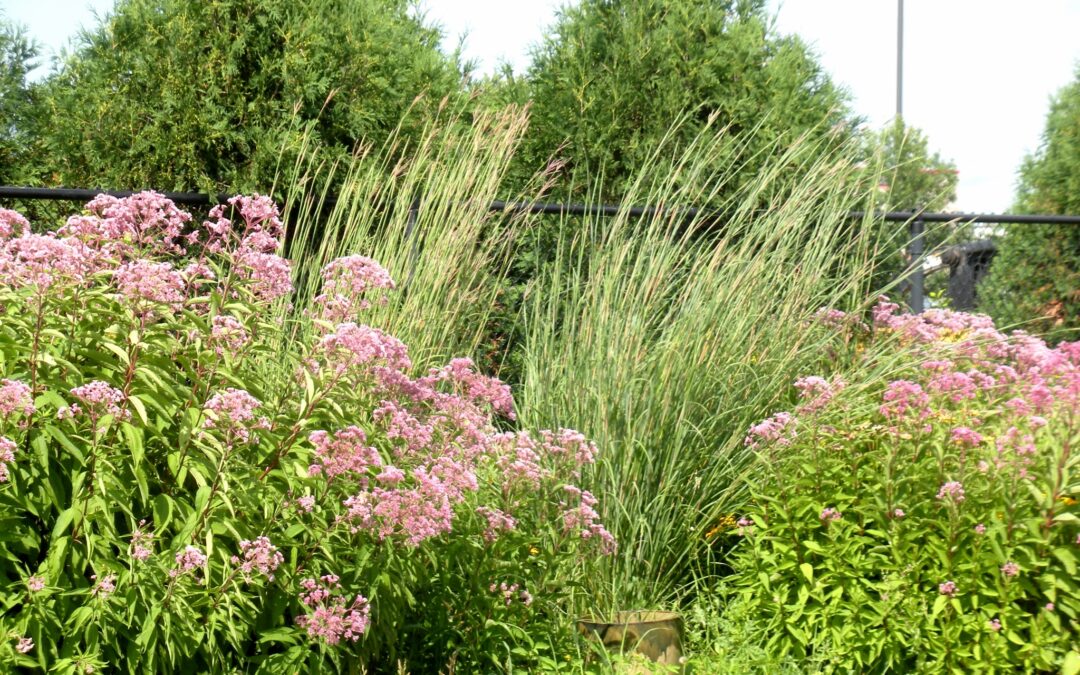It’s late summer and fall is around the corner. Slowing down, enjoying time in the garden and eating delicious fresh produce are the reasons this is a fulfilling time of year. If you are wondering what you can do in the garden, here are a few garden and landscape tasks and tips.
PLANT CARE
Watering:
Keep watering an inch of water weekly to your plants. For instance, trees and shrubs will soon set their leaf and flower buds for next season as well as keep growing their root structure. If you have fruiting plants, produce from pumpkins to apples are now making the final push to plump and ripen.
Weeding:
The weeds are still growing and some may be flowering. Pull those weeds to prevent them from reseeding. Invest in some weeding tools to prevent hand fatigue and easily pull prickly weeds like thistles that you may be skipping without gloves or a weeder.
Fertilization:
If your lawn is not in dormancy from drought, you can use a fall lawn fertilizer like Max Lawn Fall Lawn Food Winterizer to give your lawn a boost of nutrients before winter dormancy and have green grass in the spring.
You can also fertilize your trees, shrubs, and perennials with a fertilizer that is higher in Phosphate and lower in Nitrogen to promote more root growth before winter freeze. This boosts plant health going into winter and for the next season.
Pruning:
If you have any woody plants or perennials to prune, the 3rd or 4th week of August should be the last week for these tasks. You don’t want to prune too late in the season because as the days shorten, plants begin the process of hardening off for the winter. Any new growth that doesn’t have time to complete this process may have damaged foliage in the spring.
Plant material cleanup:
We recommend to wait until the spring to clean up the dead stems and foliage of your perennials. The foliage and stems help protect the plant roots from extreme cold weather and provide important protection of beneficial insects.
The exception to this recommendation is if you experienced any disease on a plant. In that case, clean up the foliage and dead stems and burn or toss the foliage in the garbage.
REDUCE WINTER DAMAGE
If you have issues with rabbits or deer around, get a hard plastic mesh tree guard. You’ll be happy you did because if animals chew around the entire tree diameter, it’ll cut off nutrients to the tree, which will cause the plant to die. Shrubs and evergreens can also experience animal damage from hungry animals so use a granular or spray animal repellent or fencing.
Here is an extra note about evergreens. It’s very important evergreens have adequate water before ground freeze or you may experience browning of needles the next spring. Evergreens do better when planted early fall instead of late fall to help them take up moisture before freezing. They slowly lose water from their needles over winter and if they are in an area of high winds and/or bright, all day sun, it dries them out quicker.
Read more about evergreen and tree winter protection.
HARVEST TIME
Read our post about using an abundance of herbs.
Refresher on when to harvest commonly grown vegetables. (PDF download)
Tomato growing tips and help if you had issues this year.
PREPARE TO BRING HOUSEPLANTS BACK INSIDE
If you have houseplants outside during the summer, once the temps are consistently 50F or below overnight, it’s time to bring your plants inside. Read our blog on the steps to start a couple weeks before bringing them inside.
CLEAN GARDEN TOOLS
We like this step-by-step guide from The Spruce on how to clean and store tools.
STILL WANT TO DO A BIT OF PLANTING?
Sowing turf grass:
Mid-August through mid-September is an ideal time to start new grass from seed. We carry high quality seed from Ramy Seeds in Mankato. If it seems daunting to keep the soil moist to sprout grass this time of year, you can wait until late fall to sow seeds that will start growing in spring with the snow melt and spring rains.
Divide perennials:
Dividing perennials (PDF List of perennials and dividing time):
When the days are cooler and your perennials are done flowering, you can divide and replant your perennials if they are crowded or not performing well in their original spot. A good rule of thumb for figuring out if you can split a particular perennial is if it blooms in the late summer or fall, divide in the spring. If the plant blooms in the spring, divide in the fall. It’s very important to boost root growth with Biotone Starter or anything with higher Phosphate and lower in Nitrogen when you transplant. Phosphate promotes root growth over foliage growth which is more important when transplanting in the fall.
Plant helpful cover crops:
Using a cover crop may reduce the need to use compost to prepare your garden soil for next year. 2Cover crops are also an option if you are done with your garden space until next spring or before you plant garlic in late Sept. or Oct. A cover crop is used to slow erosion from wind and rain, improve soil health, smother weeds, help control pests and diseases, break up compacted soil, and increase biodiversity. Plant a quick growing crop like peas, oats, radishes, or buckwheat.
Read our post about Living Soil which covers best practices for healthier soil and head over to the University of MN Extension article with a cover crops selector tool to choose a cover crop for your soil goals. For example: If you fertilize with liquid fertilizers you probably have excess nitrogen in your soil or if you grew peas ( nitrogen fixers) in an area then you’d choose a cover crop that adds other nutrients and provides other benefits.

